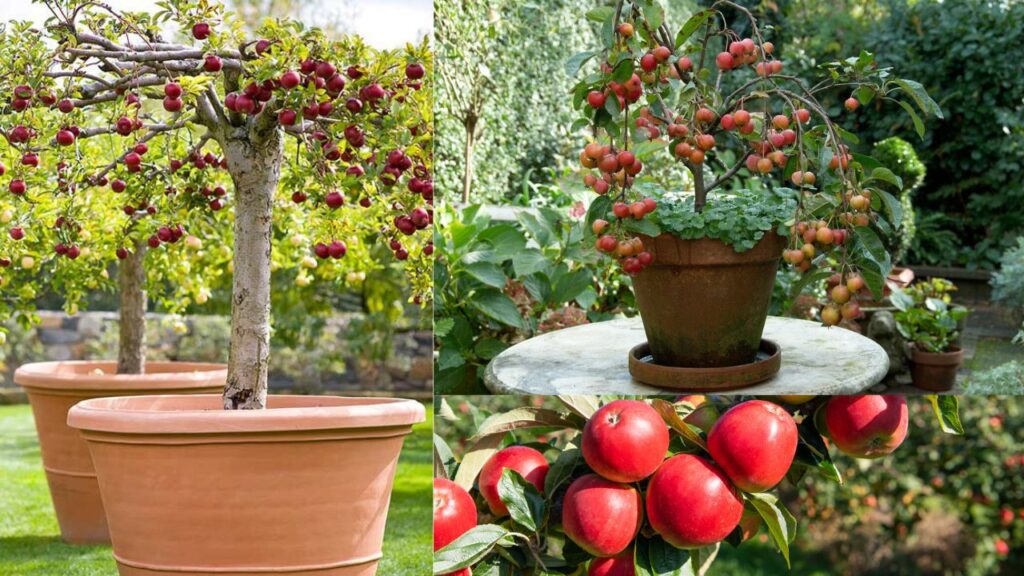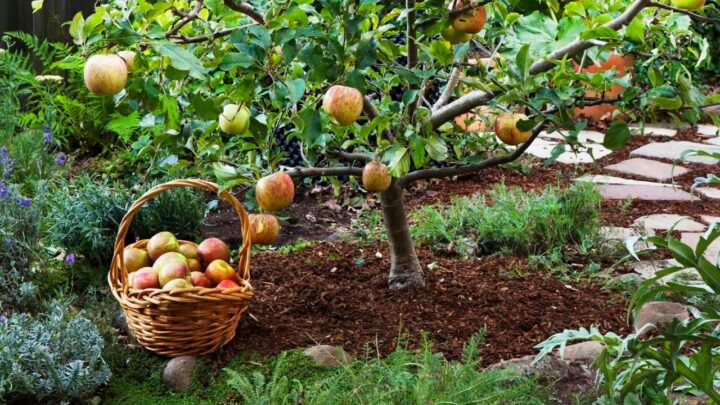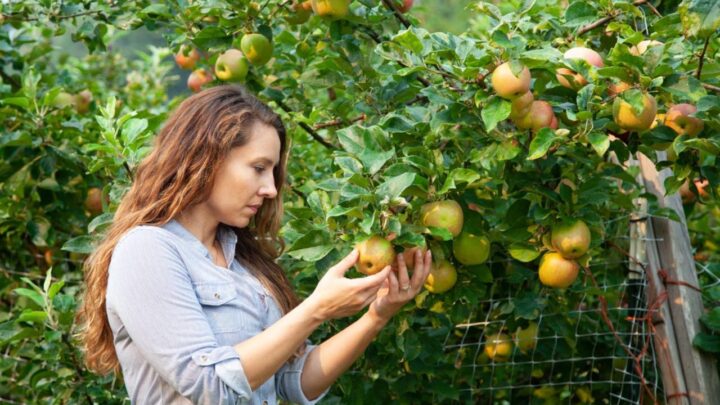Plant Dwarf Apple Trees : Dwarf Apple Trees — Perfect for small yards, these compact fruit trees offer delicious harvests without taking up much space. With the right care and setup, even beginners can enjoy fresh, sweet apples straight from their backyard.

Why Choose Dwarf Apple Trees for Small Yards
Dwarf apple trees are ideal for limited spaces because they grow only 8–10 feet tall but still produce full-sized fruits. They thrive in containers or small gardens and need less pruning compared to standard trees. Their manageable height makes harvesting easy, and you can even plant multiple varieties to extend the fruiting season.
Best Location and Soil for Growing Dwarf Apples
These trees love sunshine — at least 6–8 hours daily. Choose a spot that gets full sun and has good air circulation. The soil should be loamy, well-drained, and rich in organic matter. You can improve poor soil by mixing compost or aged manure before planting. Also, make sure the planting site isn’t waterlogged, as standing water can cause root rot.
How to Plant Dwarf Apple Trees in Small Yards
Planting dwarf apple trees requires careful preparation and attention to detail. Dig a hole that’s twice as wide as the root ball but no deeper than it. Loosen the soil at the base, place the tree in, and gently backfill with enriched soil. Water thoroughly to settle the roots and add mulch to retain moisture. Spacing is crucial — keep at least 6–8 feet between trees for proper growth.
Step-by-Step Guide to Plant Dwarf Apple Trees
- Step 1: Choose the Right Variety
Pick dwarf varieties suited for your climate, such as Gala, Fuji, or Honeycrisp. Check if your chosen tree requires cross-pollination — if so, plant two compatible varieties nearby for better fruiting.

- Step 2: Prepare the Planting Area
Clear weeds, grass, and stones from the area. Loosen the soil with a garden fork and mix in compost for nutrients. If you’re planting in containers, choose at least a 15–20 gallon pot with drainage holes.
- Step 3: Plant the Tree Correctly
Position the tree so that the graft union (the swollen joint above the roots) stays about 2 inches above ground level. Backfill gently, pressing the soil to remove air pockets, then water thoroughly.
- Step 4: Water and Mulch Regularly
Keep the soil moist but not soggy during the first few months. Add organic mulch around the base to retain moisture and suppress weeds, leaving a small gap around the trunk.
- Step 5: Support with a Stake
Dwarf apple trees often need staking to prevent leaning. Insert a wooden or metal stake beside the tree and tie it loosely with soft material to avoid damaging the bark.
- Step 6: Prune and Feed Properly
In the first year, remove weak or crossing branches to encourage strong structure. Feed with a balanced fertilizer in early spring to boost healthy growth and future fruiting.

Extra Tips for Growing Healthy Dwarf Apple Trees
- Water deeply once a week during dry spells.
- Check for pests like aphids and caterpillars regularly.
- Use organic sprays like neem oil for natural pest control.
- Fertilize every spring and mid-summer for better yield.
- Harvest apples when they twist easily off the branch.
FAQs
How long do dwarf apple trees take to bear fruit?
Most dwarf apple trees start producing fruit within 2–3 years after planting, much faster than standard varieties.
Can I grow dwarf apple trees in containers?
Yes, they grow very well in large pots. Just make sure the container has good drainage and receives at least 6 hours of sunlight daily.
Do dwarf apple trees need pollinators?
Some varieties are self-pollinating, but planting two different apple types nearby increases fruit production.
How often should I prune my dwarf apple tree?
Prune lightly once a year in late winter or early spring to maintain shape and remove dead or weak branches.
Growing dwarf apple trees is both rewarding and fun. With a bit of care, even the smallest yard can become a mini orchard. Start planting today and enjoy the joy of picking fresh, juicy apples right from your own home garden!




